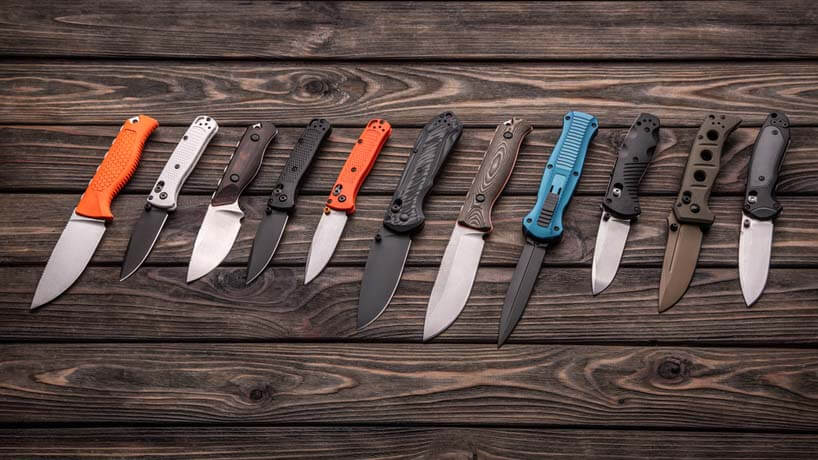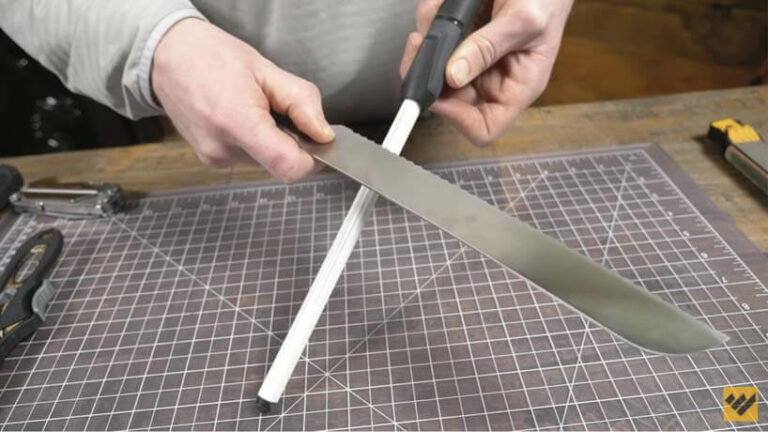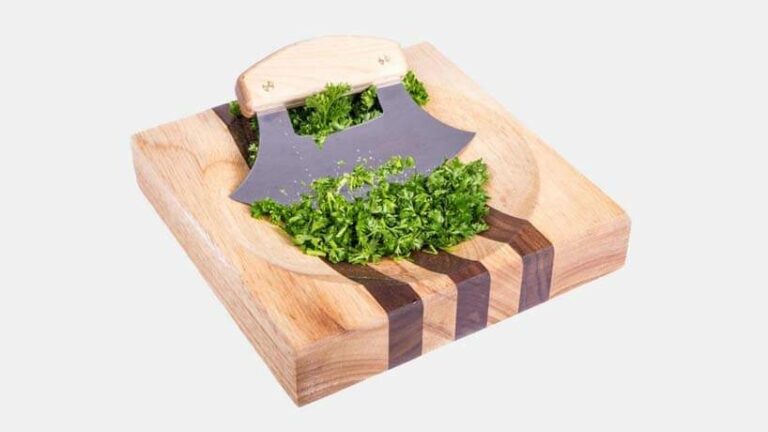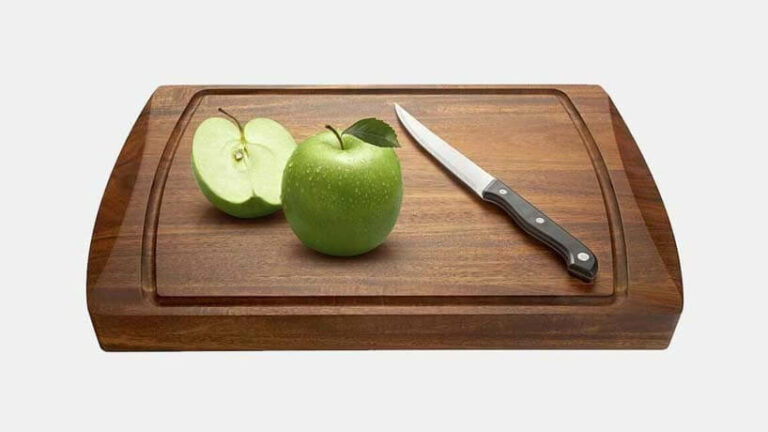Knives are more than just tools – If you can’t relate to that, it’s maybe because you’ve never had a genuinely top-notch knife. There are so many different knife types out there today, ranging from the good old pocket knives to survival and self-defense knives, to name a few. The truth of the matter is that this is not a good thing for customers.
The more the knives, the higher the confusion, and it’s true because most people aren’t interested in the small details; they just want a knife. Unfortunately, this has led to many people becoming unsatisfied with a knife they recently bought, all because they got the wrong thing. With the diverse range of knives out there, it’s not surprising that people are lost at sea.
While it is nice to have a decent selection, it’s also stressful to find your way through all the rubbish amidst it all. We’ve formulated a plan to avoid this trouble and see what’s best for you. Here’s a simple guide on how to choose the right knife. Let’s have a look.
Different Knife Types
A great place to start is by simplifying the many types of knives into a few categories to understand what we want better. We’ll group only significant types for the purposes of this guide.
Fixed Blade Knives
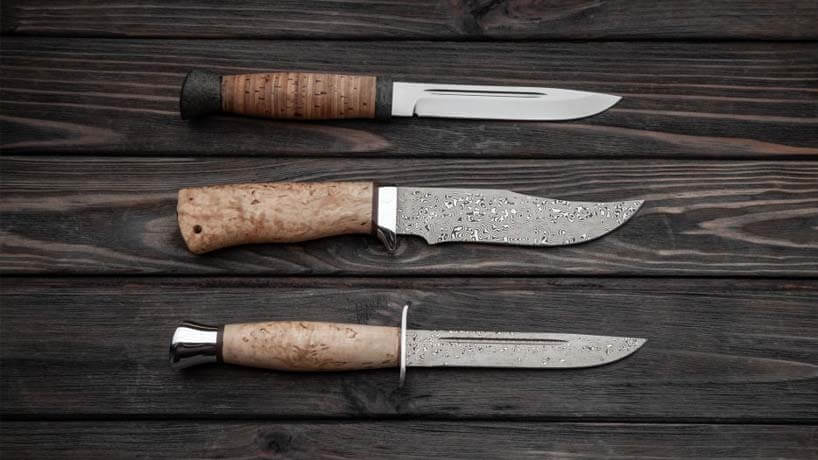
This is the most common type of knife in the world simply because it includes so many different styles. Kitchen and chef’s knives fall under this category as well as survival, self-defense, hunting, throwing, and tactical knives.
The fixed blade offers the maximum strength and durability out of all the types of knives in the market. A fixed blade can withstand high levels of force and vigorous use, with the only component that affects this being the quality of materials used to manufacture the knife.
Manual Folding Knives
These folding knives are massively popular because of their safety and reliability. Folding knives are not as strong as fixed blades because they have moving parts connected via screws and pins, but they are still very reliable if taken off correctly.
Folding knives were never designed to be titans of the industry. They were intended to be a companion to travelers and hunters because they’re small, light, and easy to handle, making them convenient and effortless to carry around all the time. If they are used for stressful tasks, I wouldn’t be surprised to get broken or damaged.
SwitchBlades or Automatic Knives
These are also folding knives but with a twist. They have a button or a switch that flicks the blade open automatically. The switchblade is an even more convenient type of folding knife with the same attributes as a manual one. They are less safe because the switch can be triggered by an accident. But a lot of the time, a switchblade comes with a sheath to protect you from any mishaps.
Balisong or Butterfly Knives

Butterfly knives are the gold and silver of the knife family. They are the musicians and artists of the lot. These knives are fancy in a way because they have a handle made from two different pieces attached to the blade. Which can be played around with to mimic the wings of a butterfly.
Tricksters have learned to perform various tricks and movements to fascinate anyone watching. These knives are illegal in many places worldwide, and you should also note that they’re not toys; they are still weapons.
Choosing The Right Knife
Most people who buy knives know that they want a knife but have no idea what knife suits their needs most. So you have to ask yourself first off, “How do I choose which knife I need?” The answer to that lies in a few simple steps.
Intended Use
What tasks will you be performing with the knife? What conditions will the knife be used in? Is it life or death, or just casual? These are the things that you need to ask yourself before going and buying a knife.
A Simple Guide to Choose the right knife starts by knowing why you need it in the first place. If you’re a hunter, hiker, or outdoors type of person, then this would call for a robust knife that could save your life if it came down to it.
If things turn sideways and you get stuck out in the wilderness or attacked by an animal. Then a small pocket knife isn’t going to do you any favors. So you’ll want to go for a fixed blade with a fiery point that can deliver devastating blows and cut open roots or trees to find water. Something that won’t break under pressure. Other casual types of needs can be met by folding knives or switchblades.
Material Quality and Performance
Chefs and outdoor sportspeople have something in common. They need equipment that is high performance and top quality. High-end chefs cherish razor-sharp knives because their jobs depend on them. In a restaurant where food is being rushed out to tables every few minutes, you need to have a very fast-paced chef. If he can’t cut vegetables and meat at lightning speeds, he’ll be out of a job.
This is where the quality comes in. If you’re in need of the sharpest knives on the market, then you’ll need to get a knife made from Japanese steel or German high carbon steel. These steels are made to the perfect hardness rating, which delivers optimum sharpness and edge retention so that you don’t have to keep re-sharpening the blade.
When you’re considering how to choose a knife, the quality of materials in the item should be a priority. The handle holds the keys to how tough the knife will be. For harsh environments, synthetic nylon, titanium, or carbon fiber handles will offer the most strength and won’t break easily.
Wooden handles are also solid but should be avoided in the outdoors. Ensure that the steel used is stainless steel because you don’t want to end up with a rusted blade that is good for nothing but to be thrown away.
Final Thoughts
So what’s next? Well, you’re in an excellent place to start the search for what you need in a knife. So the next step is to start looking at a couple of choices within your budget range and investigating them thoroughly.
Refer back to these pointers and go forward, gaining even more knowledge on knives, maybe watch a few videos that explain certain aspects in greater detail. The key is never to lose sight of what you need most. Trust us when we say it’s easy to get distracted.
Many factors make or break a knife, so you have to keep your eyes peeled for the little signs that might tell you what the knife is really like and read what other people who have used the knife before have to say about it. This is just a simple guide on how to choose the right knife; there’s still a lot more to learn and discover. So get out there and start right away, don’t wait around.

